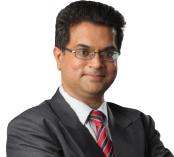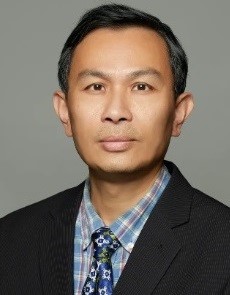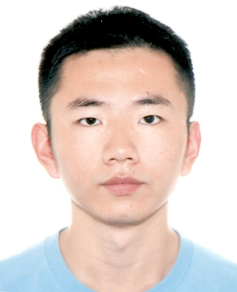
Jeyraj Selvaraj received the B.Eng. (Hons.) degree from Multimedia University, Malaysia, in 2002, the M.Sc. degree in power electronics and drives jointly from the University of Birmingham, Birmingham, U.K., and the University of Nottingham, Nottingham, U.K., in 2004, and the Ph.D. degree from the University of Malaya, Kuala Lumpur, Malaysia, in 2009. He is currently a professor and deputy director of University Malaya Power Energy Dedicated Advanced Centre (UMPEDAC), University of Malaya. He has involved in the field of solar energy for 15 years. He has done more than 75 onsite inverter test under the FiT, LSS and NEM scheme in Malaysia. He is also a member of IEEE, IEM and a member of working group committee on Photovoltaic Standards of Department of Standards Malaysia. He is one of the recipient of NAM research training fellowship for young scientist and Royal Academy Engineering UK’s Leaders in Innovation Fellowship in 2016 and 2017 respectively. In 2019 he was awarded the Erasmus+ Mobility Programme Fellowship followed by Asian Universities Alliance Scholarship in 2020.
Speech Title: Power Electronics for Renewable Energy Applications
Abstract: A number of factors are contributing to increases in renewable energy production in the world. These factors include rapidly declining costs of electricity produced from renewable energy sources, regulatory and policy obligations and incentives, and moves to reduce pollution from fossil fuel-based power generation, including greenhouse gas emissions. While not all renewable energy sources are variable, two such technologies – wind and solar PV – currently dominate the growth of renewable electricity production. The production from wind and solar PV tries to capture the freely available but varying amount of wind and solar irradiance. As the share of electricity produced from variable renewable resources grows, so does the need to integrate these resources in a cost-effective manner, i.e., to ensure that total electricity production from all sources including variable renewable generation equals electricity demand in real time. Also, a future electric system characterized by a rising share of renewable energy will likely require concurrent changes to the existing transmission and distribution (T&D) infrastructure. Utilities, grid operators and regulators must carefully plan for needed future investments in T&D, given the lead times and complexities involved. To foster sustainable, low-emission development, many countries are establishing ambitious renewable energy targets for their electricity supply. Because solar and wind tend to be more variable and uncertain than conventional sources, meeting these targets will involve changes to power system planning and operations. Grid integration is the practice of developing efficient ways to deliver variable renewable energy (VRE) to the grid. Good integration methods maximize the cost-effectiveness of incorporating VRE into the power system while maintaining or increasing system stability and reliability. Power electronics converters plays an important role is solving many of the issues and problems mentioned above. It helps to maintain the grid stability and at the same time inject regulated electrical power to the grid.

Fu-Hsiang Ko was born on October 1965 in Hsinchu city, Taiwan. Fu-Hsiang Ko received his B.S. and M.S. degrees in chemistry from National Tsing Hua University and National Taiwan Normal University in 1989 and 1991, respectively. Then, he obtained a Ph.D. in atomic science (now the Department of Biomedical Engineering and Environmental Sciences) from National Tsing Hua University in 1996. He joined the National Nano Device Lab (now the Taiwan Semiconductor Research Institute, TSRI) as an associate researcher in October 1996 and became researcher and manager in 2002. He moved to the Department of Materials Science and Engineering, National Yang Ming Chiao Tung University (NYCU) as an associate professor starting in 2005 and was promoted to a full professor on August 1, 2007. He has been as Director of Center for Academia and Industry Collaboration during 2022/2~2023/5; Chairman of Undergraduate Honors Program of Nano Science and Engineering during 2017/2~2022/7; Associate Dean of Student Affairs during 2014/2~2017/1. In 2013/7~2014/1, he has been as visiting professor at CALIT2, University of California, Irvine USA. In addition to more than 10 claim patents, he has published more than 250 peer-reviewed journal articles with 4277 times cited record. His scholarship H-index is 35 from Web of Science database report, and research field is across multidisciplinary material, chemistry and applied physics. His research interests include various sensing nano-structures and materials; and hybrid nanomaterial devices with innovative green energy, thermoelectric, electric and optoelectronic applications.
Speech Title: Implications for Global Net-zero Emissions from Piezo-enhanced Thermoelectric and Sustainable All-Day Radiative Cooling (DRC) Materials
Abstract: Air temperatures on earth have been rising since the industrial revolution. While natural variability plays some part, the preponderance of evidence indicates that human activities - particularly emissions of heat-trapping greenhouse gases - are mostly responsible for making our planet warmer. Greenhouse gases (atmospheric abundance) include carbon dioxide (417 ppm), methane (1.9 ppm), nitrous oxides (334 ppb), ozone (10 ppb), chlorofluorocarbons (1-1000 ppt) and water vapor (Increased water vapor in the atmosphere amplifies the warming caused by other greenhouse gases). Under the Paris Agreement, 197 countries have agreed to limit global warming to well below 2°C and make efforts to limit it to 1.5°C. Meeting the 1.5°C goal with 50% probability translates into a remaining carbon budget of 400–800 GtCO2. Staying within this carbon budget requires CO2 emissions to peak before 2030 and fall to net zero by around 2050. This invited lecture will focus on our recent research on emergent materials such as piezo-enhanced thermoelectric and sustainable all-day radiative cooling (DRC) materials. For example, thermoelectric materials are a class of materials in which conversion between thermal energy and electrical energy can be realized. This conversion process involves charge and heat transport, with electrons and phonons mainly being the carriers. The use of thermoelectric material is beneficial for waste heat to convert into electric power and avoids the global warming issue.

Dr. Yifei Wang is currently an Associate Professor in School of Mechanical Engineering and Automation, Harbin Institute of Technology, Shenzhen. He received his B.Sc. degree from Department of Modern Mechanics, University of Science and Technology of China in 2012, and his Ph.D. degree from Department of Mechanical Engineering, The University of Hong Kong in 2016. His research interest is mainly focused on fuel cells, metal-air batteries and water electrolyzers. Till now, he has published 80+ SCI papers in these areas with a total citation of 3100+ and a h-index of 32. He has also filed 10+ patents on innovative fuel cell and battery technologies. For the past 3 years, he has been listed among the top 2% of world's top scientists by Stanford University.
Speech Title: Paper-based fuel cells and metal-air batteries for future personal healthcare
Abstract: The market of personal healthcare is experiencing a significant revolution. Compared with conventional medical apparatus with large size and high power, new electronic gadgets with µW to mW level power input are continuously developed, such as lateral-flow testing and wireless body sensor network. These new electronics will be produced in great quantity in the coming era of ubiquitous healthcare, which require low-cost, flexible and environmentally-friendly energy technologies instead of conventional batteries. Our research is mainly focused on developing micro fuel cells and metal-air batteries for these new electronics by utilizing cellulose paper as cell substrate. The paper-based fuel cell retains the long-term operation ability of fuel cells by delivering the fuel & oxidant efficiently through the cellulose network, which is suitable for uninterrupted electronics such as wearable healthcare sensors. The paper-based metal-air battery is well known for its green raw materials together with high energy density, which is mainly targeted for single-use and disposable electronics such as lateral flow testers. Considering their great application prospect, our future research goal is to continuously optimize both the cell performance and the fabrication efficiency for these paper-based fuel cells and metal-air batteries, and to achieve their successful commercialization.